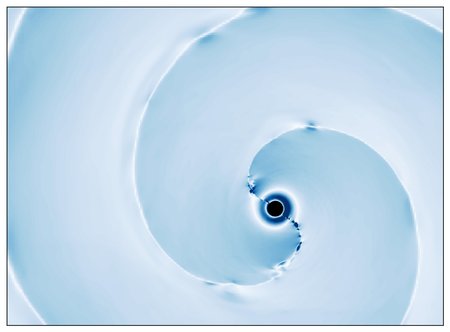Super Flower Blood Moon Eclipse

If you take a photo of the 2021 total lunar eclipse let us know! You can send images and comments to spacephotos@space.com.
No avid skywatcher ever misses a total eclipse of the moon. This celestial pageant is often more beautiful and interesting than one would think. During the time that the moon is entering and later emerging from Earth’s shadow, secondary phenomena may be overlooked.
To help prepare for the upcoming eclipse of May 25-26, Space.com skywatching columnist Joe Rao — a veteran of 18 total lunar eclipses — has prepared a timeline of the stages of the total lunar eclipse, including some of the things you might expect to see.
Super Flower Blood Moon 2021: Where & when to see the supermoon eclipse
Webcast info: How to watch the supermoon eclipse of 2021 online
| Stage | ADT | EDT | CDT | MDT | PDT | AKDT | HST |
|---|---|---|---|---|---|---|---|
| 1) Moon enters penumbra | 5:47 | 4:47 | 3:47 | 2:47 | 1:47 | 12:47 | 10:47* |
| 2) Penumbral shadow appears | — | 5:27 | 4:27 | 3:27 | 2:27 | 1:27 | 11:27* |
| 3) Moon enters umbra | — | 5:44 | 4:44 | 3:44 | 2:44 | 1:44 | 11:44* |
| 4) 75% coverage | — | — | 5:49 | 4:49 | 3:49 | 2:49 | 12:49 |
| 5) Five minutes to totality | — | — | 6:06 | 5:06 | 4:06 | 3:06 | 1:06 |
| 6) Total eclipse begins | — | — | 6:11 | 5:11 | 4:11 | 3:11 | 1:11 |
| 7) Middle of totality | — | — | 6:19 | 5:19 | 4:19 | 3:19 | 1:19 |
| 8) Total eclipse ends | — | — | 6:25 | 5:25 | 4:25 | 3:25 | 1:25 |
| 9) 75% coverage | — | — | — | 5:47 | 4:47 | 3:47 | 1:47 |
| 10) Moon leaves umbra | — | — | — | — | 5:52 | 4:52 | 2:52 |
| 11) Penumbral shadow fades | — | — | — | — | 6:09 | 5:09 | 3:09 |
| 12) Moon leaves penumbra | — | — | — | — | — | 5:49 | 3:49 |
In the above timetable, local circumstances are provided for seven different time zones. All times are for a.m. on Wednesday (May 26), except when marked with an asterisk (*), which corresponds to p.m. on Tuesday (May 25). Where dashes are provided, it means that moonset has intervened, putting an end to the spectacle.
In examining the timetable, you’ll notice that farther west, more of the eclipse will be observable before the moon sets. Generally speaking, places east of the Mississippi River will see some of the opening stages of the eclipse, while places west of the Mississippi will see totality and some of the closing stages; only along parts of the immediate Pacific coast will umbral stages be visible from start to finish.
Below are the various stages of the “blood moon,” fully described:
1) The moon enters the penumbral shadow

The shadow cone of the Earth has two parts: a dark, inner umbra, surrounding by a lighter penumbra. The penumbra is the pale outer portion of the Earth’s shadow.
Although the eclipse begins officially at this moment, this is in essence an academic event. You won’t see anything unusual happening to the moon — at least not just yet. The Earth’s penumbral shadow is so faint that it remains invisible until the moon is deeply immersed in it. We must wait until the penumbra has reached roughly 70% across the moon’s disk.
For about the next 40 minutes the full moon will continue to appear to shine normally although with each passing minute it is progressing ever deeper into the Earth’s outer shadow.
2) Earth’s penumbral shadow appears

Now the moon has progressed far enough into the penumbra so that it should be evident on the moon’s disk. Start looking for a very subtle light shading to appear on the moon’s left portion. This will become increasingly more and more evident as the minutes pass; the shading appearing to spread and deepen.
Just before the moon begins to enter the Earth’s dark umbral shadow the penumbra should appear as an obvious smudge or tarnishing of the moon’s left portion.
3) The moon enters Earth’s umbral shadow

The moon now begins to cross into the Earth’s dark central shadow, called the umbra. A small dark scallop begins to appear on the moon’s lower left-hand (southeastern) limb. The partial phases of the eclipse begin; the pace quickens and the change is dramatic.
The umbra is much darker than the penumbra and fairly sharp-edged. As the minutes pass the dark shadow appears to slowly creep across the moon’s face. At first the moon’s limb may seem to vanish completely inside of the umbra, but much later, as it moves in deeper, you’ll probably notice it glowing dimly orange, red or brown.
Notice also that the edge of the Earth’s shadow projected on the moon is curved. Here is visible evidence that the Earth is a sphere, as deduced by Aristotle from Iunar eclipses he observed in the 4th century BC. Almost as if a dimmer switch was slowly being turned down the surrounding landscape and deep shadows of a brilliant moonlit night begin to fade away.
4) The moon is 75% covered
With three-quarters of the moon’s disk now eclipsed, that part of it that is immersed in shadow should begin to very faintly light up, similar to a piece of iron heated to the point where it just begins to glow.
It now becomes obvious that the umbral shadow is not complete darkness. Using binoculars or a telescope, its outer portion is usually light enough to reveal lunar seas and craters, but the central part is much darker, and sometimes no surface features are recognizable. Colors in the umbra vary greatly from one eclipse to the next, reds and grays usually predominate, but sometimes browns, blues and other tints are encountered.
5) Less than five minutes to totality
Several minutes before (and after) totality, the contrast between the remaining pale-yellow sliver and the ruddy-brown coloration spread over the rest of the moon’s disk may produce a beautiful phenomenon known to some as the “Japanese lantern effect,” a term first coined by Long Island astrophotographer Peter A. Leavens in the 1950s.
6) Total eclipse begins

When the last of the moon enters the umbra, the total eclipse begins. How the moon will appear during totality is not known. Some eclipses are such a dark gray-black that the moon nearly vanishes from view. At other eclipses, the moon can glow a bright orange.
The reason the moon can be seen at all when totally eclipsed is that sunlight is scattered and refracted around the edge of the Earth by our atmosphere. To an astronaut standing on the moon during totality, the sun would be hidden behind a dark Earth outlined by a brilliant red ring consisting of all the world’s sunrises and sunsets. The brightness of this ring around the Earth depends on global weather conditions and the amount of dust suspended in the air.
A clear atmosphere on Earth means a bright lunar eclipse. If a major volcanic eruption has injected particles into the stratosphere during the previous couple of years, the eclipse is very dark. But, as of this writing, no such eruption has happened since our last total lunar eclipse in January 2019, so the betting is that this eclipse will be relatively bright.
Related: Why does the moon turn red during a total lunar eclipse?
7) Middle of totality

The moon is now shining anywhere from 10,000 to 100,000 times fainter than it was just a couple of hours ago. Since the moon is moving to the north of the center of the Earth’s umbra, the gradation of color and brightness across the moon’s disk should be such that its lower portion should appear darkest, with hues of deep copper or chocolate brown. Meanwhile, its upper portion — that part of the moon closest to the outer edge of the umbra — should appear brightest, with hues of reds, oranges and even perhaps a soft bluish-white.
In a predawn sky, observers away from bright city lights will notice a much greater number of stars than were visible earlier in the night.
The moon will be the constellation of Scorpius, the scorpion, just south of the star Graffias, with the entire retinue of bright summer stars and constellations spread out to the north and east of the moon. The darkness of the sky is impressive. The surrounding landscape has taken on a somber hue. Before the eclipse, the full moon looked flat and one-dimensional. During totality, however, it will look smaller and three-dimensional — almost translucent — like some weirdly illuminated ball suspended in space.
Before the moon entered the Earth’s shadow, the temperature on its sunlit surface hovered at 266 degrees Fahrenheit (127 degrees Celsius). Since the moon lacks an atmosphere, there is no way that this heat could be retained from escaping into space as the shadow sweeps by. Now, in shadow, the temperature on the moon has dropped to minus 146 degrees F (99 degrees below zero C). A drop of 412 degrees F (226 degrees C) in just over an hour!
8) Total eclipse ends
The emergence of the moon from the shadow begins. The first small segment of the moon begins to reappear, followed again for the next several minutes by the Japanese lantern effect.

9) The moon is 75% covered
Any vestiges of coloration within the umbra should be disappearing now. From here on, as the dark shadow methodically creeps off the moon’s disk it should appear black and featureless.
10) Moon leaves umbra
The dark central shadow clears the moon’s right hand (western) limb.
11) Penumbral shadow fades away
As the last, faint shading vanishes off the moon’s right portion, the visual show comes to an end.
12) Moon leaves penumbra
The eclipse “officially” ends, as the moon is completely free of the penumbral shadow.
Joe Rao serves as an instructor and guest lecturer at New York’s Hayden Planetarium. He writes about astronomy for Natural History magazine, the Farmers’ Almanac and other publications. Follow us on Twitter @Spacedotcom and on Facebook.


